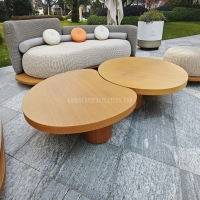Welcome to the website for landscape facilities products and knowledge.
How does the table handle expansion and contraction due to temperature fluctuations?
Wood tables naturally respond to environmental changes, particularly temperature and humidity fluctuations that cause expansion and contraction. Quality furniture manufacturers incorporate specific design elements to accommodate this inevitable wood movement. The science behind this process involves wood's cellular structure absorbing or releasing moisture from the air, causing dimensional changes across the grain rather than along it.
Expert craftsmen employ several techniques to prevent warping, cracking, or joint failure. Breadboard ends, traditionally fashioned perpendicular to the main table surface, allow horizontal movement while maintaining straight edges. Similarly, slotted screw holes and specialized hardware fasteners enable controlled shifting without compromising structural integrity. The selection of quarter-sawn lumber proves particularly effective, as this cutting method produces boards with greater dimensional stability compared to plain-sawn alternatives.
Proper construction also considers wood species characteristics, with denser hardwoods typically demonstrating less movement than softer varieties. The orientation of wood grains within panel constructions and the use of floating panels in table designs further accommodate natural expansion and contraction cycles. These meticulous engineering considerations ensure that well-crafted tables maintain their beauty and functionality despite continuous environmental changes, providing lasting durability through seasonal transitions.
Related search:

Recommendation
Elliptical metal outdoor table with nested design, resembling wood grain, round table